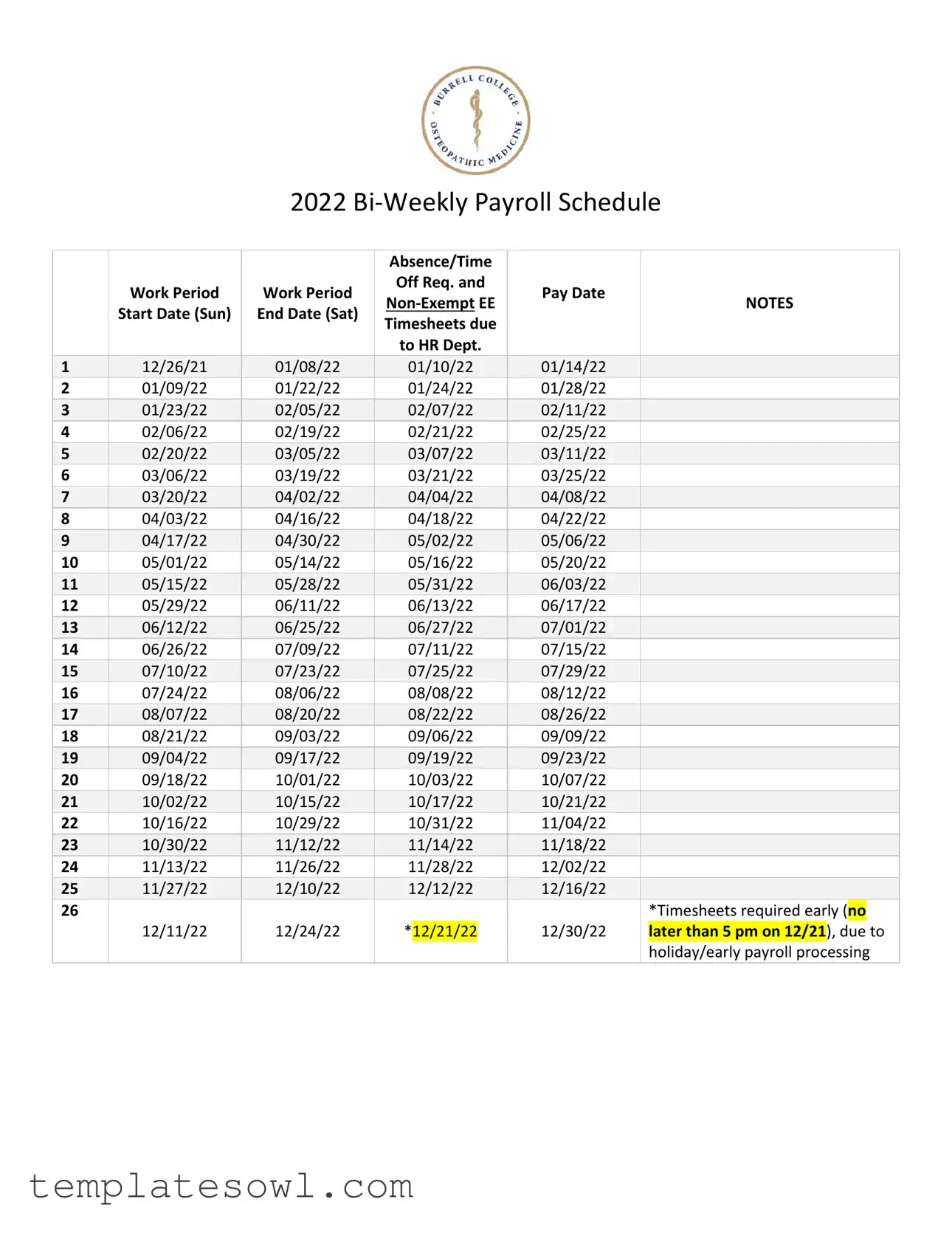What is the purpose of the Weekly Payroll Schedule form?
The Weekly Payroll Schedule form outlines the specific work periods for non-exempt employees, indicating the start and end dates of each pay cycle. It also includes deadlines for timesheet submissions and pay dates, ensuring employees receive their earnings on time.
When are timesheets due for submission to the HR department?
Timesheets must be submitted by 5 PM on the date specified for each work period. For instance, for work period 1, timesheets are due on 01/10/22. Adhering to these deadlines is essential for timely payroll processing.
What happens if a timesheet is submitted late?
Submitting a timesheet late may delay payroll processing, which could result in employees receiving their paychecks later than scheduled. It is crucial for employees to be mindful of submission deadlines to avoid any disruptions in their payment.
How often do employees get paid?
Non-exempt employees are paid every two weeks, following a bi-weekly payroll schedule. Employees can expect to receive their paychecks on the designated pay dates listed in the form, such as 01/14/22 for work period 1.
What should an employee do if they have a question about their payroll?
If an employee has questions regarding their payroll, they should contact the HR department directly. HR can provide assistance with timesheet submission, pay dates, or any discrepancies in pay.
What is the significance of the notes section in the form?
The notes section provides important reminders, such as early submission deadlines during holiday periods. For example, timesheets for the work period ending 12/24/22 must be submitted by 5 PM on 12/21/22 due to holiday processing. This ensures employees are aware of any special requirements.
Can the payroll schedule change throughout the year?
While the payroll schedule is typically consistent, changes may occur due to holidays or special circumstances. Employees will be notified in advance if there are any changes to the usual payroll schedule.
Who qualifies as a non-exempt employee under this schedule?
Non-exempt employees are those who are entitled to overtime pay under federal and state labor laws. These employees are typically paid hourly and are required to submit timesheets to document their hours worked.
What is the pay date for the last work period of the year?
The last work period of the year, which runs from 12/11/22 to 12/24/22, has a pay date of 12/30/22. Employees should ensure that their timesheets are submitted on time to receive their final paycheck of the year without delays.

